The advancements in optical networking technologies are further necessitated by the increase in traffic data brought by cloud computing, multimedia, and IoT streaming. The gap between demand and supply of the coverage and capacity of the networks is widening, and hence, the need for high-capacity solutions is profound. This is where the 100G coherent transceiver comes in as a game changer. The 100G coherent transceiver utilizes advanced modulating and digital signal processing techniques which greatly enhance the data transmission rate and distances achievable over the existing fiber optic networks. In this paper, the 100G coherent transceiver is discussed in detail, focusing on its implications for optical networking and potential within the industry.
What is a 100g Coherent Transceiver, and How Does it Work?
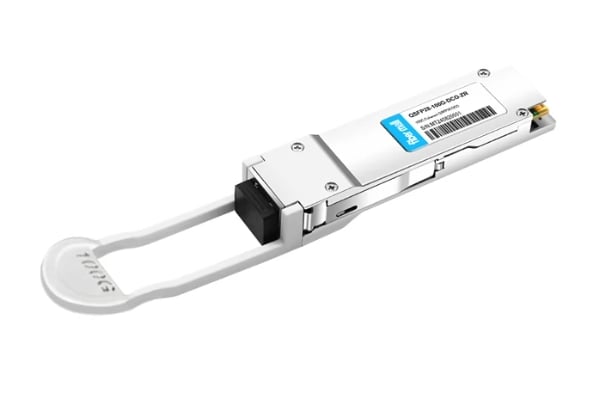
A 100G coherent transceiver is an optical module that encodes and decodes information on an electrical signal at a very high speed over long distances. It employs sophisticated modulation formats such as Quadrature Amplitude Modulation (QAM) and phase-shift keying through the use of coherent detection techniques. The transceiver is a system designed such that the communication subsystem relies heavily on Digital Signal Processing (DSP) after transmission of the data such that the signals are accurately reconstructed despite the noise and other forms of distortion. This significantly increases both the data rates and the distances of transmission over fiber optic networks. By minimizing the losses and optimizing the spectral occupancy, it provides high and reliable performance, which is certainly one of the most important components of today’s optical networks, considering the rising demands of data traffic.
Understanding Coherent Optics
Coherent optics is an advanced optical communication technique that relies on the principles of coherent detection for transmitting data. In contrast to a direct detection approach whereby light encodes data in intensity alone, in coherent optics, light waves are encoded using their phase, amplitude, and polarization, thus increasing the bandwidth capacity and distance over which the information is transmitted. This makes it possible to use more complex modulation formats like QAM that can transmit multiple bits per symbol to increase data throughput.
Coherent optics also incorporate better signal processing. DSP algorithms are crucial in reconstructing the received signal by countering various forms of impairment introduced during transmission, such as chromatic dispersion and polarization mode dispersion. Since these forms of impairment often degrade the performance of the optical network, their suppression by DSP allows for greater reliability and longer reach of coherent signals for data transmission.
Information on systems employing coherent optics, compared to systems employing noncoherent optics, shows that systems employing coherent optics are more advantageous. For instance, coherent systems are capable of increasing reach and capacity up to an order of ten. A 100G coherent transceiver can send a lot of data over distances of up to several thousand kilometers without needing signal regeneration. In addition to that, coherent optics creates more efficient use of the optical spectrum, making it more spectral efficient and cheaper per transmission of a bit of data.
In conclusion, it can be said that coherent optics is a revolution in the way information is relayed using a light wave, as it comes with unmatched vision, distance and effectiveness. Considering the fact that the demand for information is growing ever larger, coherent technologies are an important building block of advanced optical networks able to support reliable and expandable communication.
The Role of Digital Signal Processing (DSP) in Coherent Technology
It is possible to say that the academic perspective on coherent optical communication systems has changed significantly thanks to Digital Signal Processing. In particular, signals corrupted by chromatic dispersion or polarization mode dispersion can be modified with appropriate algorithms designed to carry out such modifications. Algorithms such as these make it possible for coherent systems to communicate across long distances without the frequent need to repeat the signal, increasing the reliability and integrity of the data. Additionally, DSP provides effective modulation methods that increase spectral efficiency and the capacity of the entire network. Therefore, it can be said that digital signal processing is the key that enables coherent optical systems to achieve enhancements in performance, scalability, and cost.
Benefits of Tunable Optical Transceiver Modules
Tunable optical transceiver modules have a lot of potential in modern optical communication networks, and here’s why, as well as their advantages:
- Cost Efficiency: It is labor and cost saving to have a tunable device that can be used alone instead of the need to have several transceivers that are based on multiple wavelengths. Hence, an item or cargo doesn’t have to be carried around every time, and one can save up on logistics.
- Network Flexibility: Traffic patterns can be highly volatile, especially due to increase or decrease in bandwidth requirements. However, with tunable transceivers, one can overcome that issue, which is a massive benefit.
- Improved Network Utilization: Thanks to tunable modules, reconfiguration can be done without causing any interruptions, whereas, at the same time, wavelength consumption can be optimized and maximum output can be generated from the existing hardware set up without need for any extensive changes.
- Simplified Network Planning and Maintenance: This feature also allows the workforce required to plan for a network, especially from a quantity standpoint, to not be overly much. Lastly, downtime can be reduced because the hyper-parameter of maintenance can be altered.
- Scalability: When it comes to economic aspects of new data technologies, especially in terms of pure number; it is crucial to note that a tunable transceiver’s wavelengths can be easily integrated with new and existing ones.
- Enhanced Performance: As the name suggests, tunable modules allow for the perfect output, or in this scenario, signal quality, which in turn increases reliability and performance drastically when data has to be transmitted across different networks.
In summary, one can not under employ the importance tunable optical transceiver modules have on modern optical networks in the 21st century, especially when addressing data transmission challenges.
How Does the 100g Coherent Optical Transceiver Fit into Modern Data Centers?
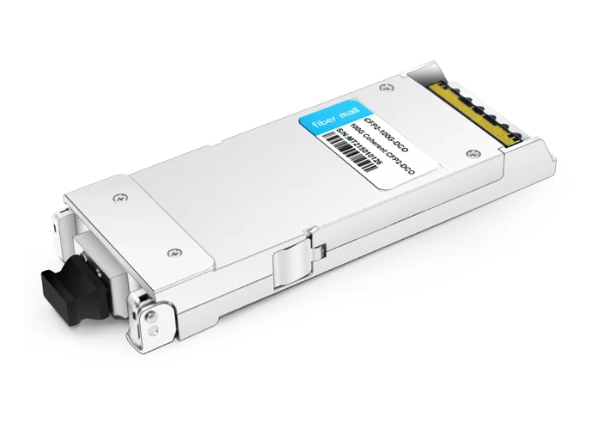
Integration with Data Center Cabling Systems
The 100g Coherent Optical Transceiver is not only interoperable with existing standards, but also cements the infrastructure boost of the data center cabling systems. Long and short distance transmission is made easy with high-capacity devices on single mode fiber making space and cost optimization a reality. It renders installation effortless thereby easing maintenance and causing zero impact. This kind of versatility provides an enabling scenario for future expansion and fits within the changing data requirements in a data center.
Advantages Of Traditional Fiber Optic Solutions
The 100g Coherent Optical Transceiver makes use of technology that better positions it within its market compared to any fiber optic solutions in use. In summary, the advantages are as follows:
- Higher Data Rates: Leveraging the coherent technology allows 100gbps of transmission rates to be made which are significantly higher than conventional non-coherent solutions allowing for data rates of 40gbps at most. This elevation in data rates aids in the need for higher bandwidth in modern data centers.
- Extended Reach: A coherent transmitter using superior signal processing techniques makes it easier to reach long distances which would otherwise require regeneration with an additional signal. It’s worth noting that the coherent technology does not require more than a 1000km span when using amplification and signal processing hardware adding to its reach a good deal.
- Improved Spectral Efficiency: Coherent transceivers have been noted to expand the bandwidth of fiber by utilizing QAM modulation formats. This sort of spectral efficiency is primarily beneficial in congested network situations where it is necessary to maximize the available fiber space infrastructure.
- Enhanced Signal Resilience: Sophisticated algorithms for correction and chromatic as well as polarization mode dispersion compensation have made alteration consistency a thing of the past in using coherent technology. This sort of vigor means errors are fewer, lessening the number of retransmissions required making the network performance better.
- Adaptability in Network Design – Coherent optical transceivers are adaptable and can easily be incorporated into existing network configurations with diverse types and arrangements of fiber. This adaptability enhances progressive modifications and shifts thereby easing the transition to the subsequent generation of networking technology.
To conclude, the developments in the 100g Coherent Optical Transceiver incorporate increased capacity within a single-threaded piece due to the wider data rate, transmission distance, spectrum efficiency, and high signal performance value, making it a necessity in the paradigm shift of data center communication.
Future-Proofing Data Centers with Higher Bandwidth Capacity
As for the current hype around the data centers being able to operationally align themselves for the future bandwidth requirement scaling, they must deploy frameworks that balance between the existing technology and the newer ones. The expansion of scalable network infrastructure becomes a part of the strategy. This also involves installing high-capacity rotors and switches with plans for further updates to come at bare minimum disruptions. Prioritizing high bandwidths utilizing data transfer rates via optical technologies such as 400G and 800G coherent transceivers should be taken into consideration. In addition, it would be advisable for data centers to implement software-defined networking (SDN) in order to have better control of the network resources, load balancing, and overall enhanced performance of the network. Making adjustments to the energy-efficient cooling systems and the efficient energy administration would also support the endurance of the data center, Taking into account the capacity requirements and the ecological factors. Collectively, these measures provide a comprehensive approach to data center evolution that allows not only to respond to the present challenges but also effectively address the advancing requirements of future technologies and the traffic expanse.
Exploring the Technology Behind QSFP28 Digital Coherent Optics
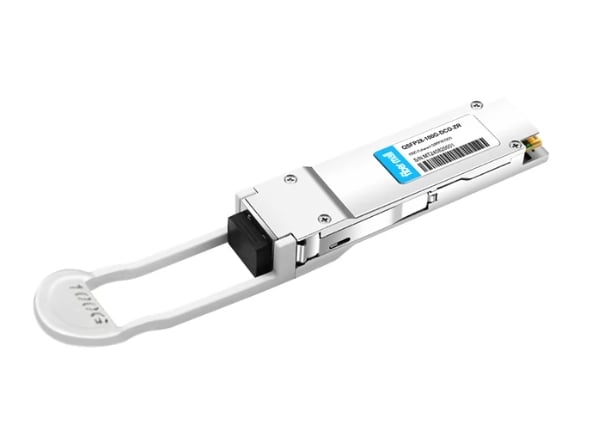
What Makes the QSFP28 Form Factor Unique?
The shape and size of the QSFP28 form factor is quite remarkable because it is made possible for high-density deployment in data center settings. The form factor utilizes Ethernet and optical transmission technologies, thus allowing for flexible networking options. Furthermore, the QSFP28 module has been designed with a view to being energy efficient and cost effective, thus providing the required operational needs without consuming too much energy. Its cross-compatibility with several platforms and network components allows for more pliability and therefore, it is an important aspect of the structure of today’s data center.
The Impact of Silicon Photonics on Coherent Modules
The advent of silicon photonics completely alters the design and functional characteristics of coherent modules as it offers not only scaling but integrating benefits as well. Silicon photonics as a technology makes use of silicon as an optics medium, which makes it possible to integrate photonic circuits and electronic control on the same chip. This, in turn, reduces the energy requirements and costs of production as photonic-integrated circuits use mask fabrication processes already in use for semiconductor production.
One of the major benefits that accrue from incorporating silicon photonics into coherent modules is the increase in the achievable data rate. For example, the integration of silicon photonics will increase the rate of transmission of the system to more than 400G because of the need for an increased transmission rate and reduced transmission delay. In his recent industry report, he indicated that silicon photonics-enhanced coherent modules could have a power efficiency improvement of 50 percent over traditional optical modules.
Also, silicon photonics makes it possible to design smaller and thermally more efficient modules which solve the much unwanted space and cooling problems that are common in today’s data centers. The natural complementarity of silicon photonics technology with CMOS also helps to combine optoelectronic and semiconductor technologies resulting in cost effective and mass production of coherent modules.
To conclude, the adoption of silicon photonics may also help in improving the performance and reliability of coherent modules, while also increasing the production efficiency and reducing the operational cost, therefore advancing the capabilities of the next generation data centers.
Comparing 100g ZR and CFP2-DCO Modules
Technical Specifications
100g ZR Modules
- Data Rate: A maximum data transmission rate of 100Gbps.
- Reach: Geographically, the device is designed to reach over relatively shorter regions of up to 80km.
- Form Factor: The module’s infrastructure is designed in a way to be less spatially demanding or compact.
- Power Consumption: Implementation-wise, it can range from 5- 15w.
- Application: With respect to its application, a 100g ZR module is fitted for use within data centers and within metro systems.
CFP2-DCO Modules
- Data Rate: It has a much higher maximum data transmission rate of 400Gbps.
- Reach: It has a much wider geographical reach whereby it targets long ranges inclines as well as locations using metro.
- Form Factor: It accommodates ZR modules-in-chassis and other ZRX that require state-of-the-art hardware.
- Power Consumption: The range for power consumption is between 15w and 25w.
- Application: Together with a metro system, a coherent long-distance network is also suitable for it.
Comparative Analysis
- Interconnectivity: The two are interconnectable but have varying uses where 100g ZR modules are used for short inter data center connections and the latter is suitable for long connections.
- Space Efficiency: The operational zones of 100g ZR modules are considerably efficient when space is limited, unlike the larger networks that involve a CFP2-DCO’S shape.
- Energy Efficiency: While the two have differing energy profiles, he 100g ZR is best suited for energy saving scenarios whereas the latter can work well over long distances in more energy consuming scenarios.
To summarize, when it comes to encoding and transmitting digital information across optical networks, MSA-Lx and MSA-Ly both play an important role, and the choice between them has to be determined by particular parameters such as the required bandwidth, distance, and energy consumption for the specific end.
What are the Key Applications of a 100g Coherent Transceiver?
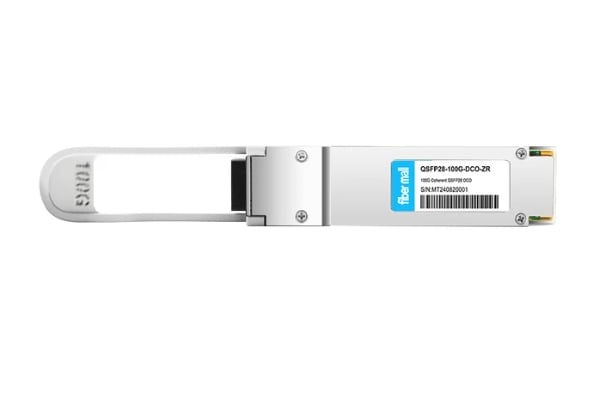
Deployments in Fiber Optic Networks
Modern optical networks have become a vital tool in various industries, especially in meeting the expectation of fast and expanded bandwidth systems by deploying 100g coherent transceivers to the following types of network scenarios:
- Center to Center Communication (DCA): With a growing number of data Centers forming a backbone of Internet structure, the demand for centers to centers interconnections is expected to grow. 100g coherent transceivers are able to set up great data flow between far apart centers through high bandwidth links enabling synchronization.
- Long Haul Optical Networks: Long distances optical transmission over hundred to thousands kilometers makes it possible for 100g optical transceivers to be used since they have a broad coverage and have high data capabilities. This reflects the advantages of these devices with regard to various modulation formats and suppression of signal distortion/enhancement of signal processing parameters.
- Metropolitan Area Networks: In a metropolitan area where there is a growing demand for data communications within a small geographical area where the network topology can be complicated, 100g coherent transceivers can create an amendable solution by increasing traffic capacities. Their functioning inevitably transcends latencies, improving quite significantly the efficiency of metro networks seeking enterprise services over consumers seeking internet services.
- Cloud Connectivity: The more enterprises utilize cloud solutions, the greater the need for efficient and fast cloud connectivity. 100g coherent transceivers have successfully linked enterprise networks to cloud service providers and vice versa to guarantee efficient and secure data transfer.
Notably, all of these applications benefit from the essential features of coherent technologies on 100g, which include high scalability and flexibility, as well as better spectral efficiency, thereby facilitating the growth and upgrading of the world’s optical communication networks.
Leveraging Coherent Optical Transceivers in Long-Haul Communication
The use of coherent optical transceivers in long-haul communication systems involves enhancing their transmission distance and data integrity. Such transceivers use superior modulation formats bred for efficient bandwidth usage and maximized data throughput. Coherent technology maintains signal quality over large distances and strives to mitigate the impact of chromatic dispersion and polarization-mode dispersion effects that bedevil long-haul networks. This results in higher spectral efficiency and makes it possible to transmit over many channels without the risk of transmission loss. In this regard, it is evident that coherent optical transceivers play a central role in the affordable and efficient modernization of already existing facilities, enabling communication over large distances without compromising capacity.
Enhancing Optical Interconnect Solutions with Coherent Technology
Focusing on harnessing coherent technology in optical interconnect solutions boosts data rates over existing fiber by adding advanced signal processing and high-speed electronic circuits. The use of coherent technology allows dense wavelength division to multiply the growth of the bandwidth, enabling vast amounts of data to be sent over a plurality of channels at the same time. Such progress not only enhances the capacity and performance improvement of carrier systems but also increases the integrity, reliability, and distance in the transmission of data, suitable for long-haul and data center interconnect applications. Coherent detection methods of phase and amplitude modulation are more immune to both linear and nonlinear degradations, making the optical communication systems more suitable for networking.
Challenges and Future Trends in Coherent Optical Transceiver Technology
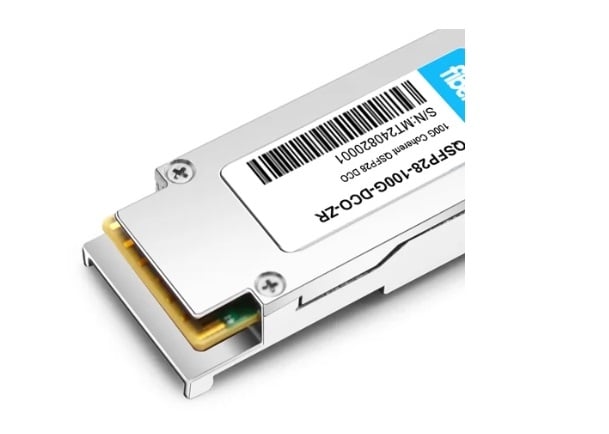
Overcoming Modulation Complexity
The task of keeping a balance between algorithm performance and power consumption includes changing the hardware structure. The shifting of error rates and the protection of the data are achieved by means of enhanced digital signal processing techniques. Furthermore, the fabrication of more efficient photonic devices and the use of adaptive modulation formats help counter these complexities while ensuring that there is great spectral efficiency and lesser operation costs.
The Role of Coherent Optics in 5G Networks
In the deployment and further development of the 5G networks, coherent optics are critical since they provide the requirements for increased bandwidth and decreased latency. The advent of enhanced mobile broadband (eMBB), ultra-reliable low-latency communications (URLLC), and massive machine-type communications (mMTC) is very useful in these scenarios but comes at the expense of overwhelming data requirements which can be supported by a strong and adequate fiber optic core. The application of coherent optical technologies enables high-capacity long-haul fiber links with increased coverage area and 5G signal penetration in urban and rural areas.
Recent studies suggest that coherent optics, when deployed, drastically improve the capacity of the networks, increasing it by almost 50% while at the same time decreasing the lags that users face by about 25%. At the heart of technical implementations to achieve this more efficient use of deployment space was the dual-polarization quadrature amplitude modulation (DP-QAM), which allows spectrally optimized signals to be deployed. Moreover, the ability to control signals more accurately transformed coherent optic networks into instruments for better-integrated networks with minimum interference.
In the face of ever-increasing global data traffic, the use of coherent optics in 5G networks cannot be understated, as they will be critical in ensuring the seamless integration of existing infrastructure into future digital frameworks. The future of telecommunications these days is focused on this optical technology as it offers a reasonable approach to transforming and maintaining the rise of 5G networks, which can cater to the extensive data communication requirements of the different applications.
Innovations Driving the Next Generation of Optical Transceivers
A few key advancements focusing on enhancing optical transceiver performance and efficiency while making them suitable for expanded communication networks are pushing forward the next generation of optical transceivers. To begin with, the emergence of Si photonics offers great potential as it facilitates the monolithic integration of photonics and electronics on a single microchip made of silicon. Such a technology decreases the cost and footprint and enhances power consumption effectiveness and bandwidth concentration. Furthermore, there is great advancement towards the small form factor pluggable (SFP) transceivers that are expected to operate at greater data conveying rates of 400G and above. These new transceivers are not only power-only efficient but also perform at very high speeds, hence suitable for use in data centers. In conclusion, there is an increasing use of machine learning and artificial intelligence to enhance the performance of optical networks. These technologies help in adequate health management of the sub-systems as well as entire systems in real-time, as well as prediction of system impending failures, maintenance of services, and improvement of maintenance costs. Overall, these advances serve to improve the technology of optical transceivers, which will eventually aid in meeting the envisaged communication networks of the future with higher data rates.
Reference Sources
Frequently Asked Questions (FAQs)
Q: What is a 100G Coherent Transceiver, and how does it work?
A: While the 100G ZR QSFP28 Digital Coherent Optics may be used as an example, there are quite a few certainties about 100G Coherent Transceivers; for example, they transfer gigabits per second within long distances; this is made possible by the use of cutting-edge methodologies like PDM and CD, would increase over fiber optical transmission channels which helps to diminish the signal degrading influences. Let’s consider the ideal Dopodco C Band since it was developed with an emphasis on dual/serial advancing differential phase shift keying and second-order digital depth.
Q: How does DCO technology benefit optical networking?
A: Since DCO does attach a benefit to the transceiver, the digital signal processing functions have been merged into a single package, thus narrowing convergence with stark performance escalation and perceivable variability that is helpful for 100G networks, 200G networks, and more with the help of DCO C-band Tunable Optical Transceiver.
Q: What role do active optical cables play in high-speed data transmission?
A: Mechanical technology that incorporates fiber optical cables allows the active optical cable cables to transfer under long distances as well as high speeds and low latency. They help in the data center and high-performance computers by economizing on weight and power usage in comparison to other types of cables such as direct attach cables.
Q: Can you elucidate the importance of C-band tunable optical transceiver modules?
A: The Key C-band tunable optical transceiver modules including devices such as the 100G ZR QSFP28-DCO help in improving the elasticity of dense wavelength division multiplexing (DWDMs) as they allow operators to change wavelengths while retaining the same hardware. This flexibility is very important in enhancement of the network capacity and the overall efficiency of the network.
Q: What are some of the benefits attained from the use of the 100G ZR QSFP28-DCO modules in data centers?
A: Very few, if any, data centers lack 100G ZR QSFP28-DCO modules, given how they allow the seamless connectivity of an entire data center thanks to the simplified architecture, high capacity, and long-distance transmission, which makes them perfect for DCI applications. The need for regenerators is also significantly cut down as these modules allow for connections of up to 80km.
Q: What are the main contributions brought upon by DSP integration to 100G ZR applications?
A: The 100GBase-ZR indications are one of the examples of a special applications in which DSPs are utilized because they depend on working with more complex operations such as error correction and spectral shaping, over wider spans. With these functions enabled, problems with signal integrity as well as performance even over longer distances are significantly mitigated.
Q: How can high-density cables be considered an advantage with modern networks?
A: High density cables present certain advantages such as the simple management when implanted within telecommunication infrastructure or data centers, due to their high packing design coupled with high bandwidth support. Their sizes allow for better space management and expansion of a network’s capacity.
Q: How do fiber media converters contribute to network flexibility?
A: Fiber media converters allow networks to mesh irrespective of the differing interfacing mediums, for example, fiber and copper, by interpreting their signals. This type of flexibility allows for the implementation of multiple network topologies and increases the coverage of the current facilities while doing so without the cost of modernizing old systems.
Q: How do tunable lasers relate to coherent networking solutions?
A: Tunable lasers allow switching through different wavelengths without changing the physical transceiver module. This is especially critical for dense WDM (DWDM) networks where proper assignment and control of the wavelengths is vital in ensuring that high volumes of data and traffic are transmitted while the network remains strong and isn’t prone to failure.
Related Products:
-
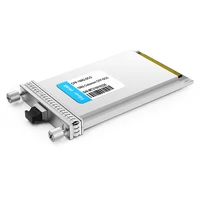 CFP-100G-DCO 100G Coherent CFP-DCO C-band Tunable Optical Transceiver Module
$6500.00
CFP-100G-DCO 100G Coherent CFP-DCO C-band Tunable Optical Transceiver Module
$6500.00
-
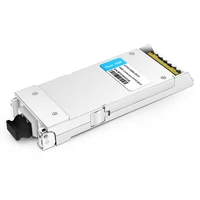 CFP2-100G-DCO 100G Coherent CFP2-DCO C-band Tunable Optical Transceiver Module
$7000.00
CFP2-100G-DCO 100G Coherent CFP2-DCO C-band Tunable Optical Transceiver Module
$7000.00
-
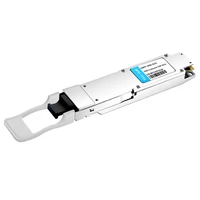 OSFP-100G-DCO 100G Coherent OSFP-DCO C-band Tunable Optical Transceiver Module
$6500.00
OSFP-100G-DCO 100G Coherent OSFP-DCO C-band Tunable Optical Transceiver Module
$6500.00
-
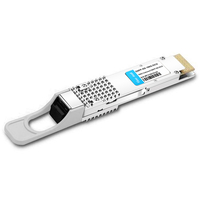 QSFP-DD-100G-DCO 100G Coherent QSFP-DD DCO C-band Tunable Optical Transceiver Module
$6500.00
QSFP-DD-100G-DCO 100G Coherent QSFP-DD DCO C-band Tunable Optical Transceiver Module
$6500.00
-
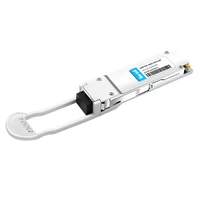 QSFP28-100G-DCO-ZR 100G Coherent QSFP28 DCO C-band Tunable Optical Transceiver Module
$6000.00
QSFP28-100G-DCO-ZR 100G Coherent QSFP28 DCO C-band Tunable Optical Transceiver Module
$6000.00
